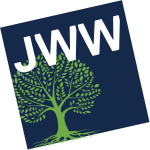Yesterday we drove east from Kigali to visit the Agahozo Shalom Youth Village, an extraordinary program established by Jewish philanthropist Ann Heyman as a response to helping Rwanda move forward following the horrifying genocide of the early 1990’s. While visiting the Genocide Memorial in Kigali earlier in the day, we stood in a room filled with snapshots of hundreds of men, women and children who were murdered. But we cannot forget that thousands of youngsters survived, many without any family or with families that lost mothers or fathers.
Agahozo is an effort to work with these survivors now, in their later teenage years, by bringing them to the Shalom Youth Village to live, to study and to grow as future young leaders whose potential will be essential as Rwanda struggles to recover from its tragic history. We visited as the program was completing its first year. A class of 125 teens, both young men and women selected for the vulnerability of their situation and potential, had completed the inaugural year and with the exception of two, were away on a school holiday. The two still in residence had no surviving relatives to visit.
The visit reflected the potential to implement a vision and with extraordinary collaborators, make a difference in the aftermath of the unthinkable. We had the privilege of meeting with Alain, a young Rwandan in his early thirties who, after a successful career in business in other parts of the world had returned to give back. As the director of the Shalom Youth Village he showed us the facilities, but more, he demonstrated the difference a dedicated staff person can make in fulfilling Ann Heyman’s vision. His commitment to the potential of his young charges was overwhelming. It was clear that he had brought a range of social entrepreneurial skills to an important human service operation that makes a difference.
Agahozo is modeled on a successful Israeli program, Yemin Orde, familiar to many of us. The best of Yemin Orde and other programs aimed at maximizing the potential of youth have been forged into a Rwandan reality. It was inspirational to talk briefly with the other teaching staff. Nir, an Israeli, discussed with Alain how to assure that while encouraging the young residents, they also taught them to believe that “the sky is the limit.”
Today we drove from Kigali to the Democratic Republic of Congo. The drive was among the most beautiful territory I ever had the opportunity to see. What struck me as we drove was the vast number of people walking along the roads in the rural areas, which make up the majority of this nation. I couldn’t help but reflect on the aftermath of the Rwandan genocide when the images in the news focused on hundreds of thousands of Rwandan Tutsi refugees moving along these same roads.
Crossing the border reflected the difference between a nation that has addressed its past and is building its future, and one that has not. Of course, enormous challenges remain in Rwanda. With the reestablishment of a rule of law and an effort to encourage forgiveness between survivors and perpetrators built into the society, crossing into Congo could not have provided a starker difference. Entering the town of Goma, where wars continue to rage, atrocities continue in the outlying areas and refugees flock for safety, the absence of normalcy and rule of law, and the lack of respect for human life resonated. The next week will provide us with the ability to consider how Jewish World Watch can involve itself in an area of the world where 5.5 million lives have been wasted and the world remains unaware and unconcerned.


